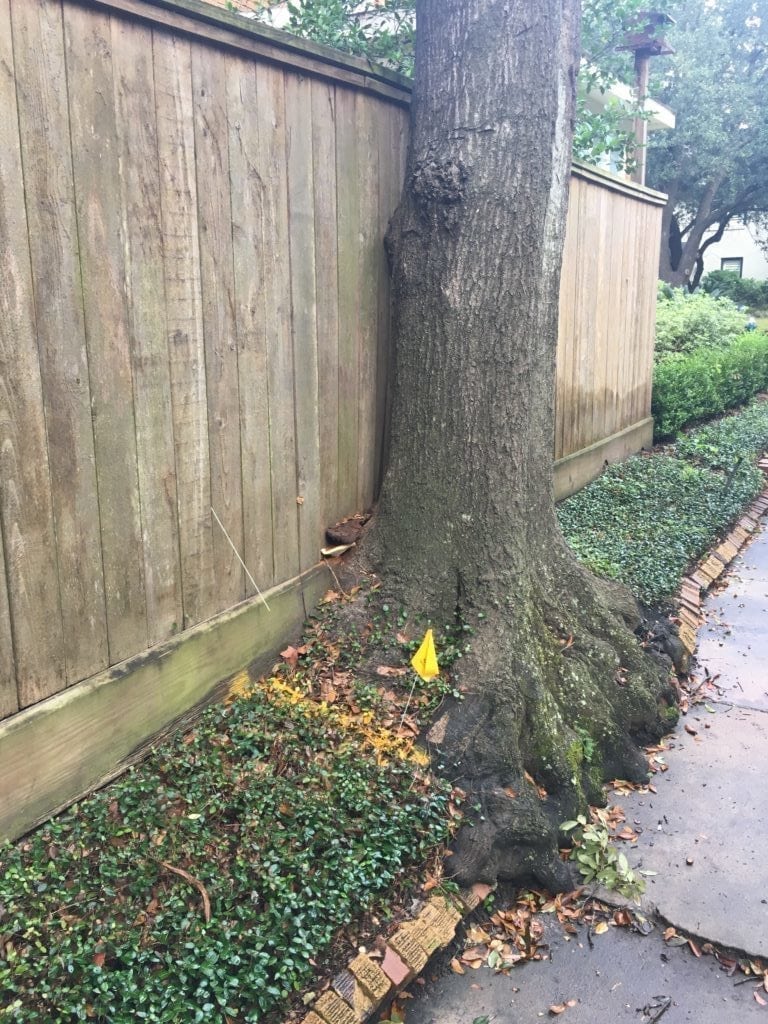Reasons to remove a tree
Reasons to remove a tree range from risky situations to pesky problems. Common tree removal reasons include trees that have become hazardous, and trees in poor locations. Having to remove a tree can be a difficult decision. However, once a tree becomes a risk, it is best to leave it in the hands of a trained professional. A certified arborist can determine if removal is necessary, provide you with alternative options, and help you weigh the risks and benefits.
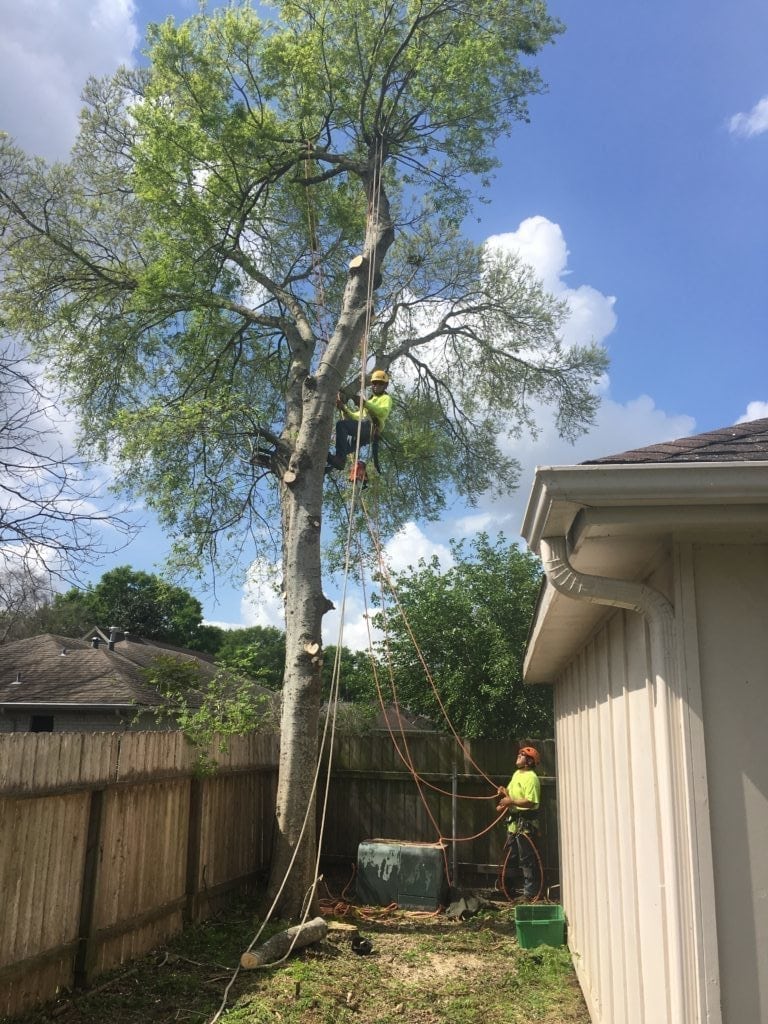
Tree removal reasons include:
- Hazardous
- End of life expectancy
- decay and/or disease
- over crowding
- messy
- poor location
- new construction
- property damage
Hazardous tree removal
Many factors go in to determining if a hazardous tree requires removal. Arguably, the trees location is the most important factor in tree removal reasons. If a tree is in the middle of a field, inaccessible to people or livestock, then removal is unnecessary. However, if a hazardous tree is over the top of a popular children’s play ground, the risk is much higher and removal should be a top priority. A certified arborist can access the risk a hazardous tree poses. In addition to risk assessment, a qualified profession should be able to recommend removal alternatives such as disease and pest treatment.
For more information about hazardous tree removal see our page: Hazardous tree removal
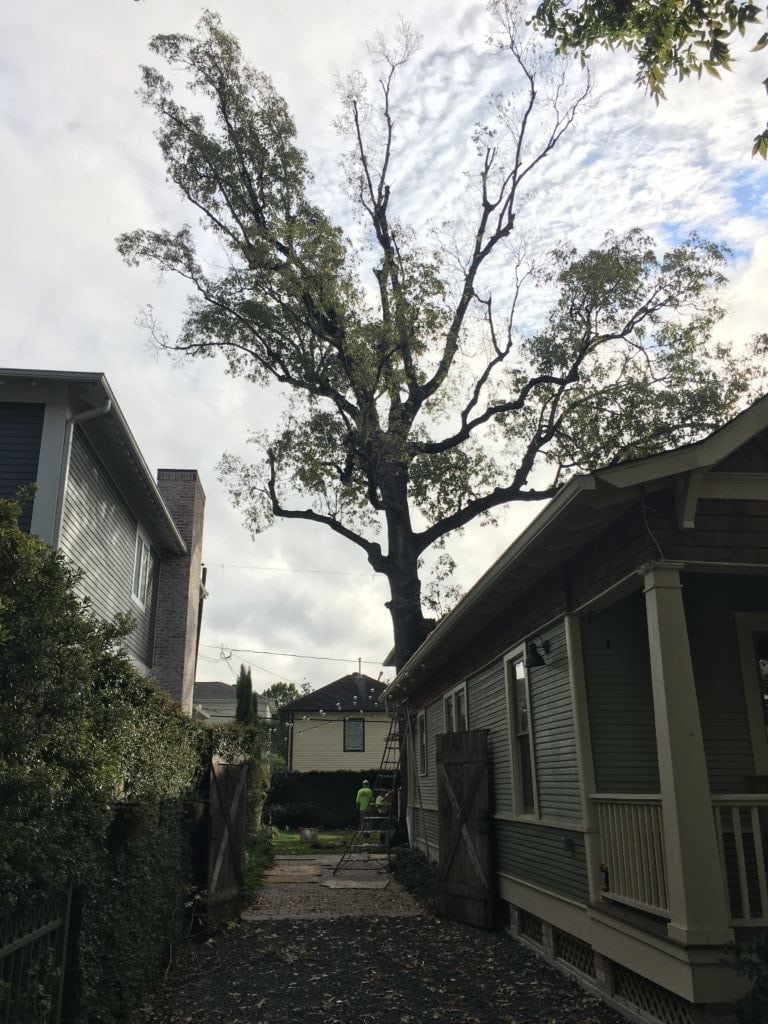
Mature tree removal
Tree maturity plays a part in determining removal necessity. For instance, while live oaks can live 300 plus years – water oaks have a life span of only 40-60 years. A tree can begin to drop large limbs once it has reached the end of its life expectancy. Branch failure related to a trees maturity may be cause for removal.
Read more about Mature tree removal
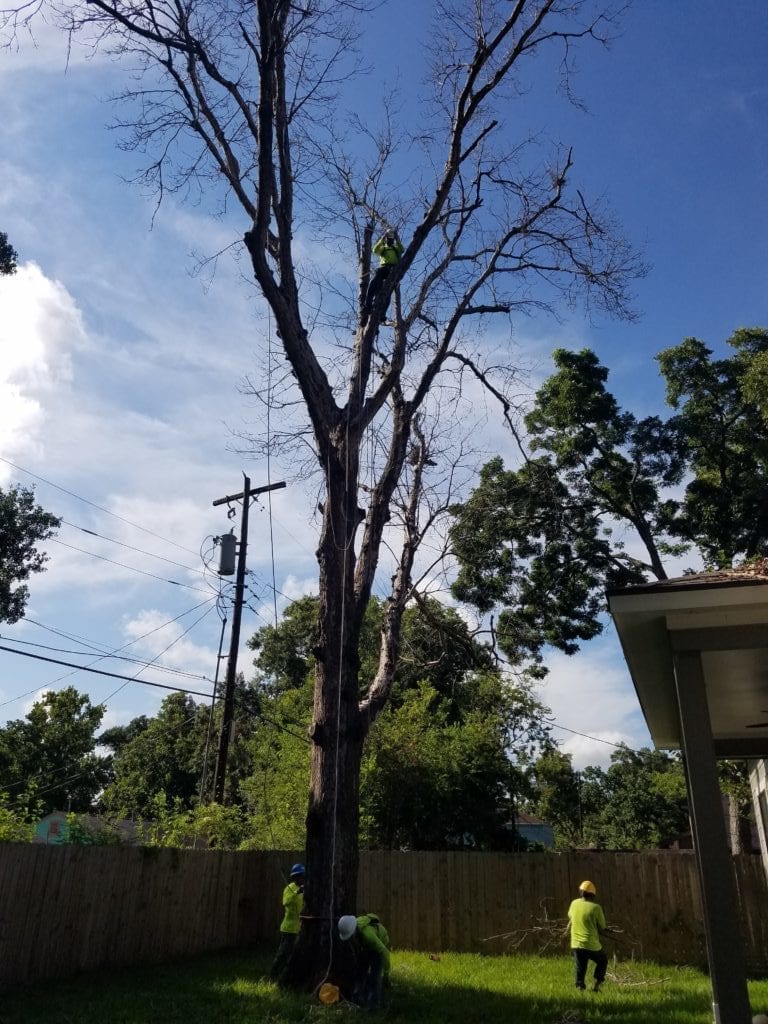
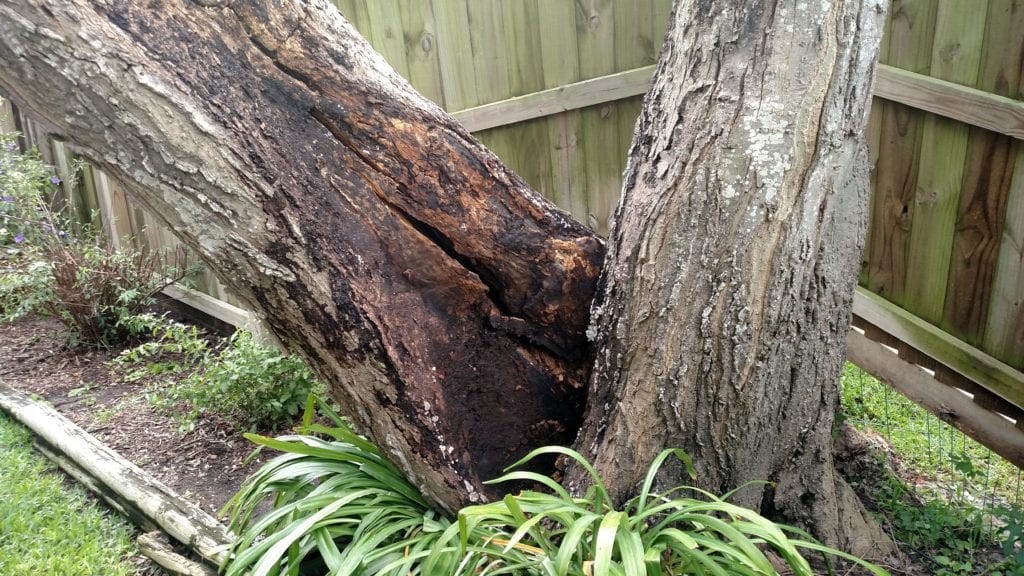
Decayed tree removal
Call a certified arborist out for an inspection of your tree when decay is present to determine its structural integrity. Typically trees decay from the inside out. Mushrooms and fungus growing on a tree, in addition to wood that is soft and crumbles easily are red flags. Wounds through the bark are entrance points to start the process that leads to decay. Although decay cannot be cured, proper tree care can help prevent it. Removal of a dead or dying tree is recommended as soon as it is detected. Waiting not only increases the risk of failure, but also puts the tree care professionals removing it in greater danger. This also translates into higher costs for removal.
Overcrowded tree removal
Too often in the Houston, Texas area large species trees are planted too close together in too small of spaces. Removing select trees in an overcrowded location allows for the right ones, in the right place, to thrive. The remaining trees have an increased access to the nutrients available in the soil, water, and sunlight.
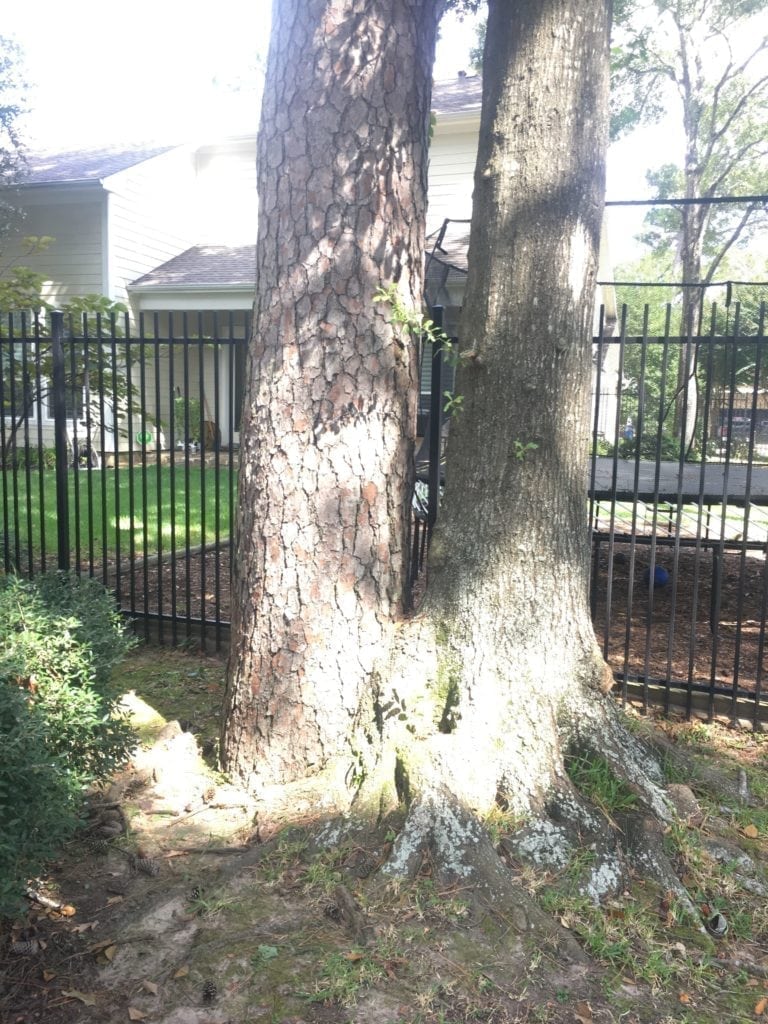
Messy tree removal
Flowers, fruit, nuts, seeds, and pollen can all cause messes. When a tree with one of these characteristics is in an unfavorable location, say over the top of your driveway, it may be a big enough issue to cause for removal. In addition to the mess these trees drop, they can also attract unwanted wildlife visitors.
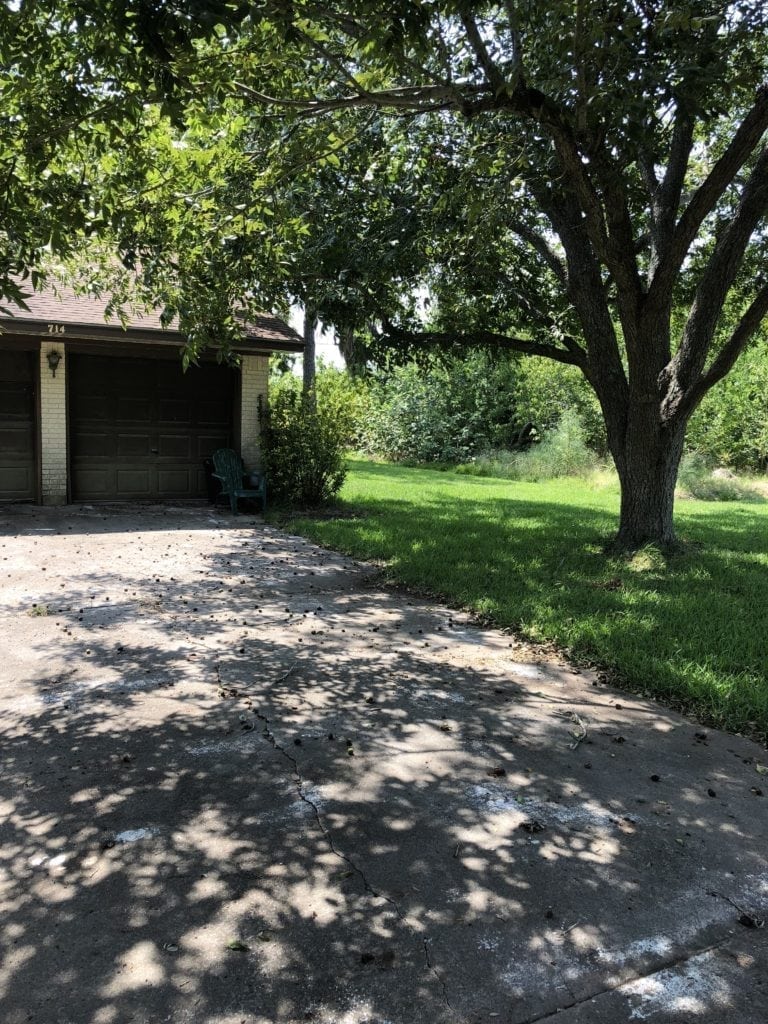
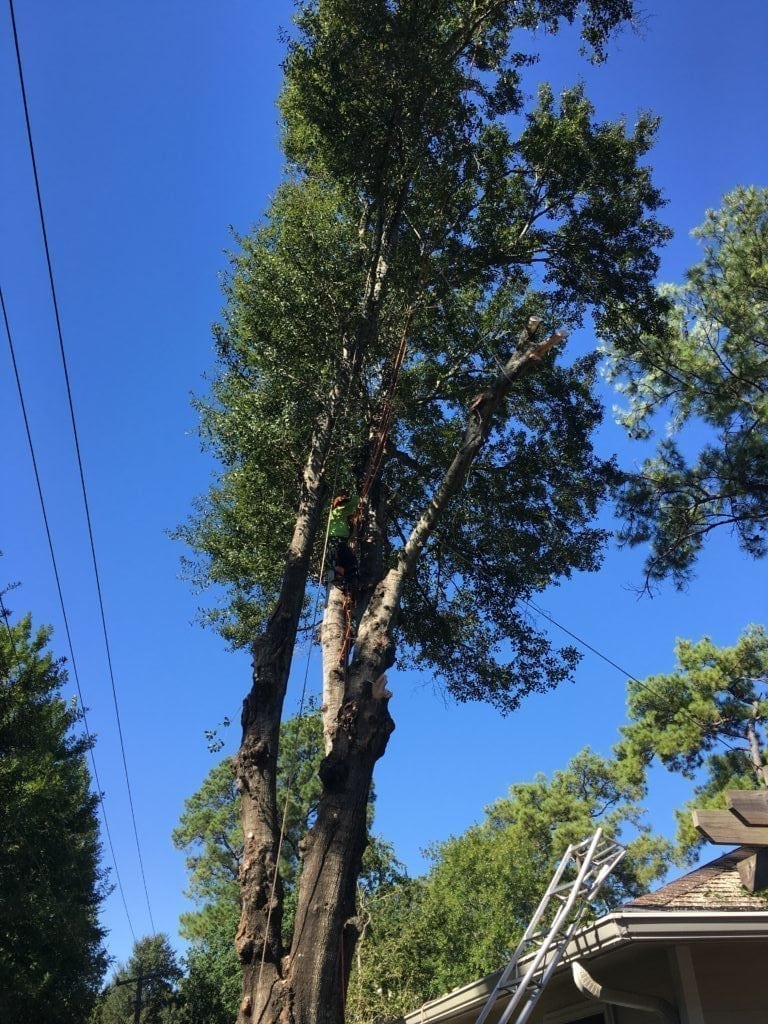
Removing a tree in a poor location
Above all, poor location is the root cause of tree removal reasons. A hazardous, mature tree with decay, and messy features would not cause any issues in the middle of a field. Trees along fence lines, in close proximity to structures, and under power lines can all be considered poor locations.
Read more about removing trees in poor locations: Poor location tree removal
New construction tree removal
During construction projects, trees are often in the vicinity and likely to be impacted. Reasons to remove a tree during construction include invasive root issues, location conflicts, or extensive damage done to the tree during construction. Removing trees is usually required when clearing a new site for construction. However, when adding on to an existing structure tree removal may be required as well.

Property damage tree removal
Tree roots can be invasive, causing damage to pipes, foundation, and pavement. Roots require air, and in the Houston, Texas clay soil stay fairly shallow. The root zone of a tree will extend twice as wide as the trees canopy if space allows. Roots are attracted to the air and moisture in pipes, likewise, roots that damage pavement are seeking moisture. Planting tree species with invasive roots in the proper location will prevent damage.
